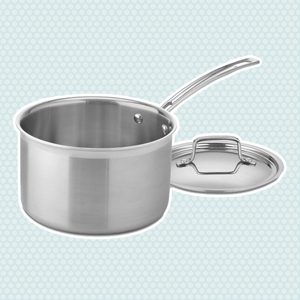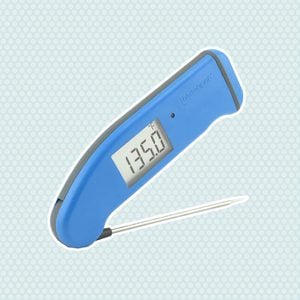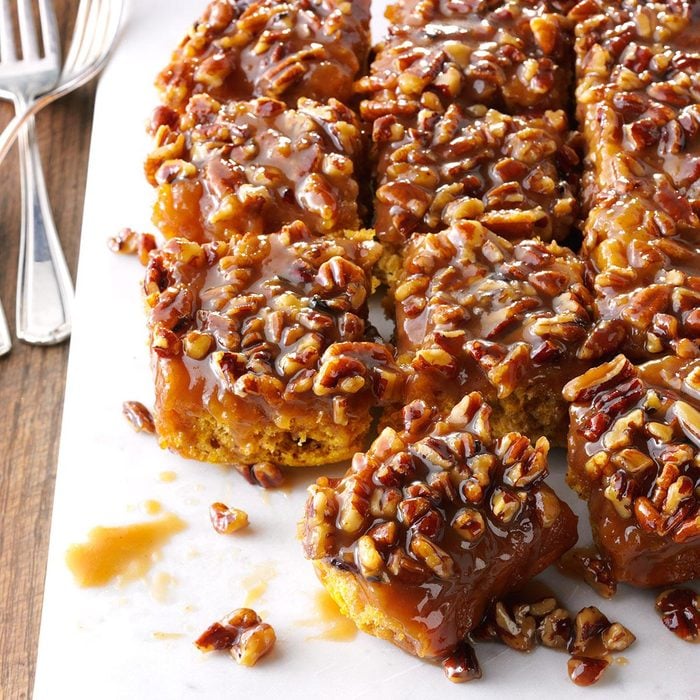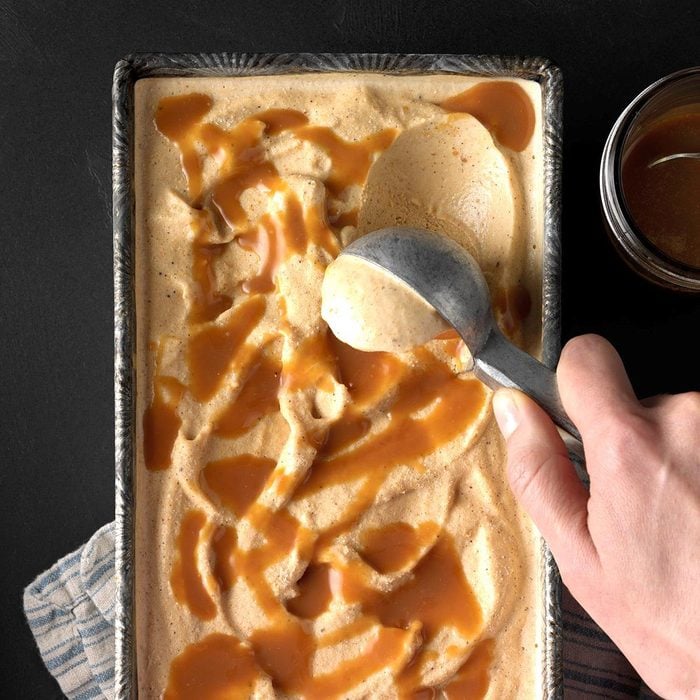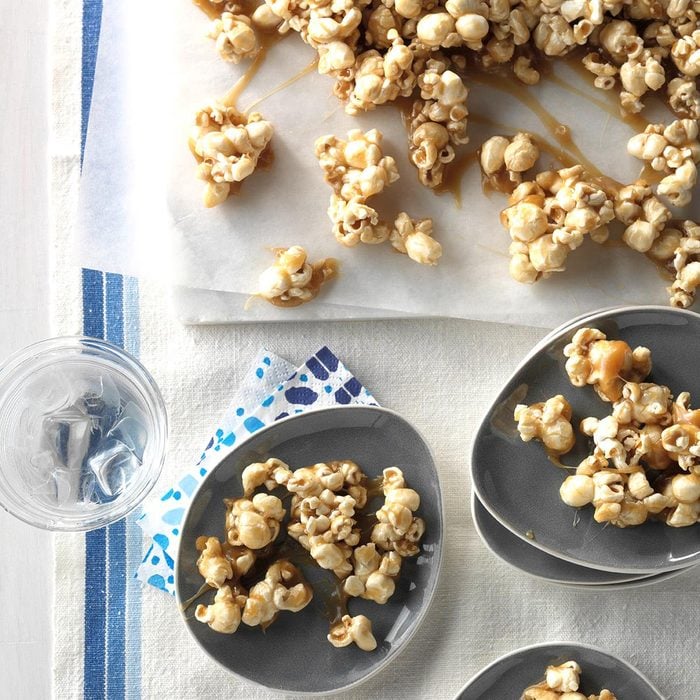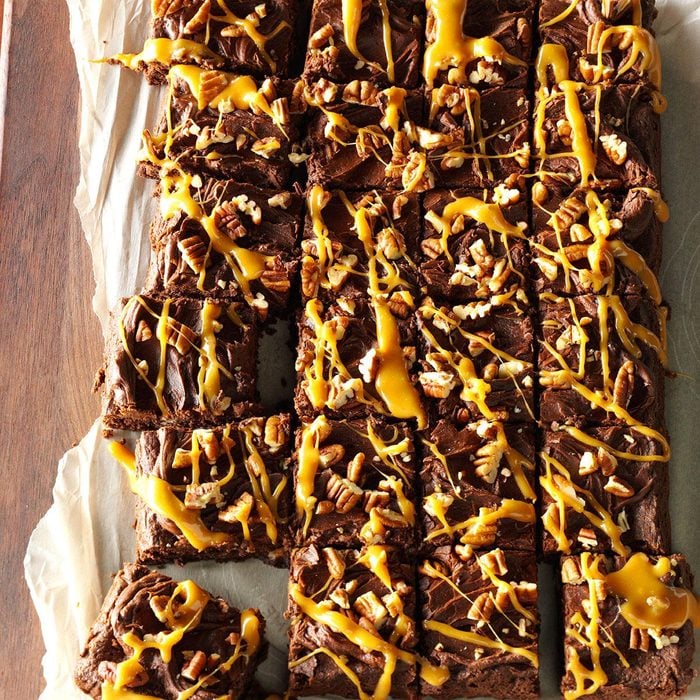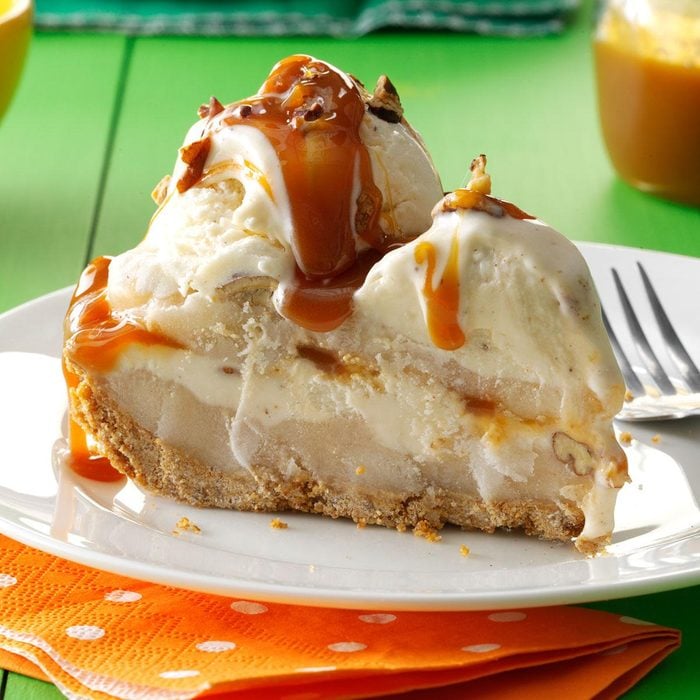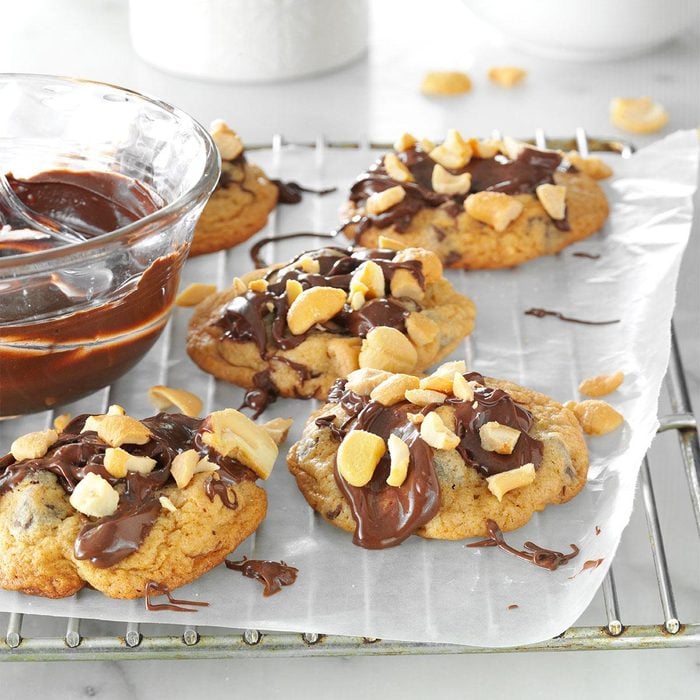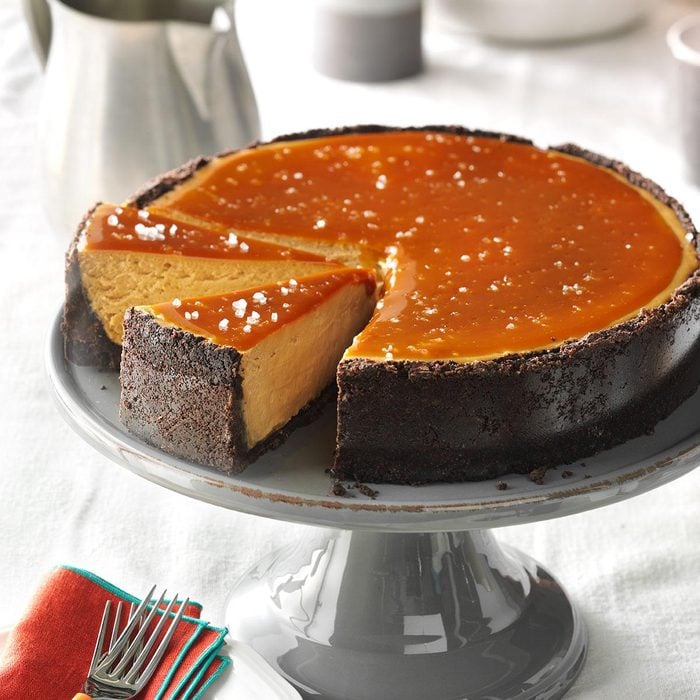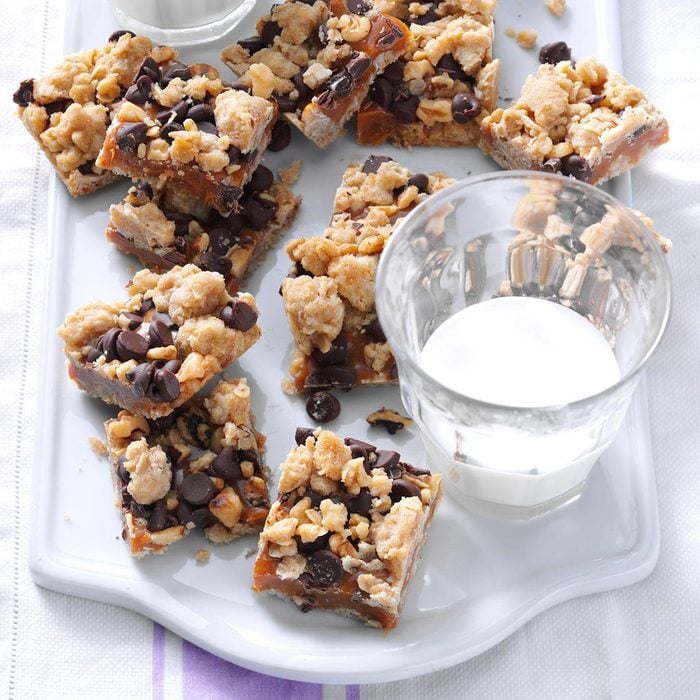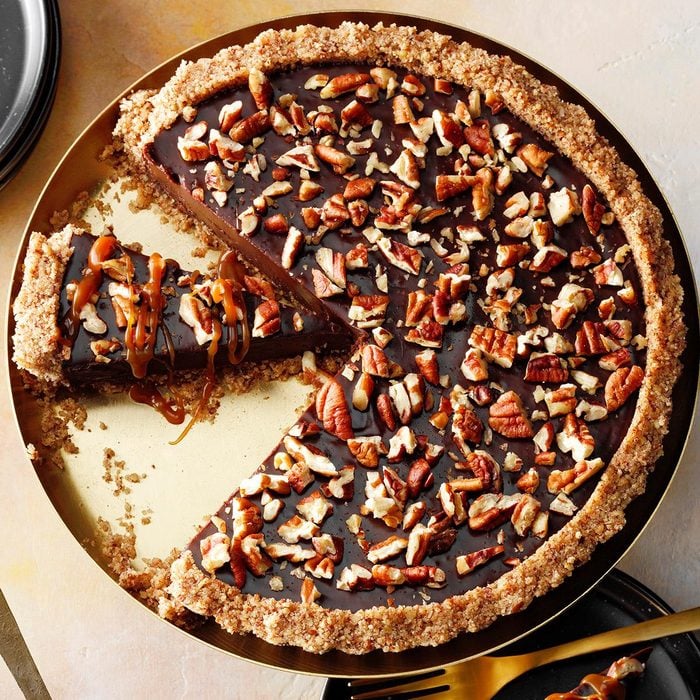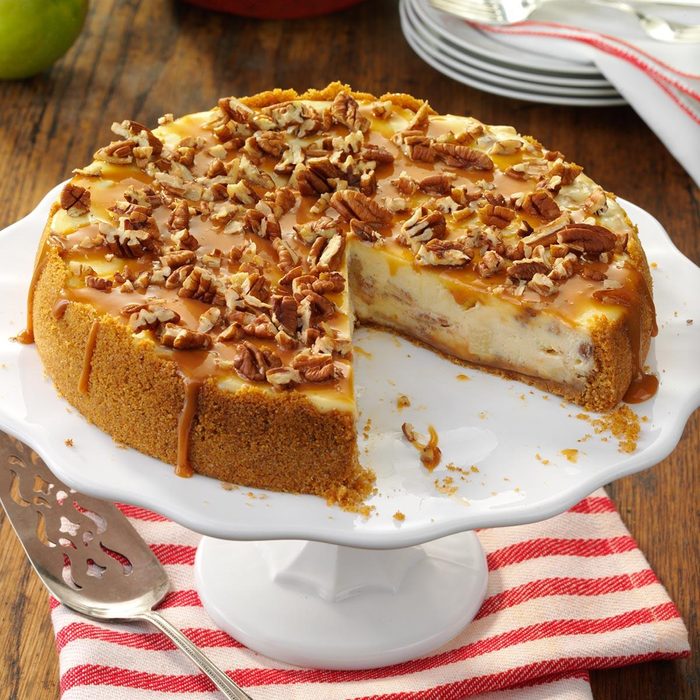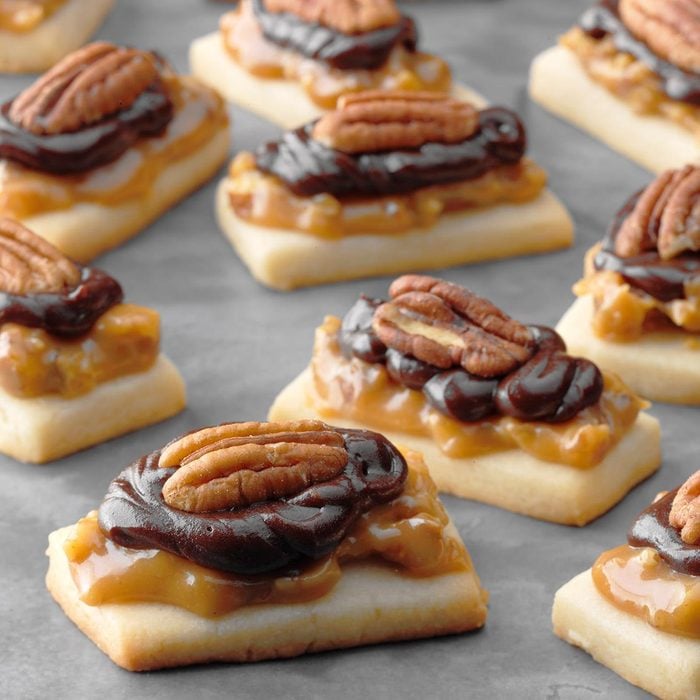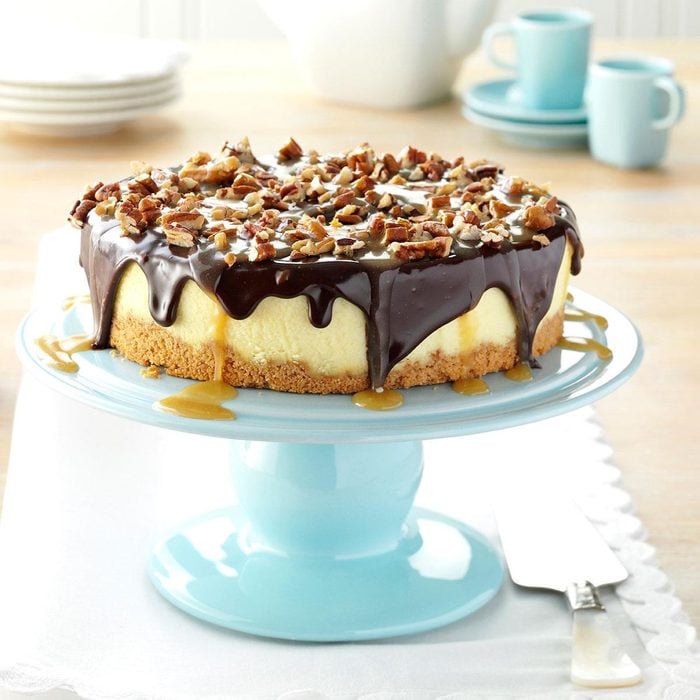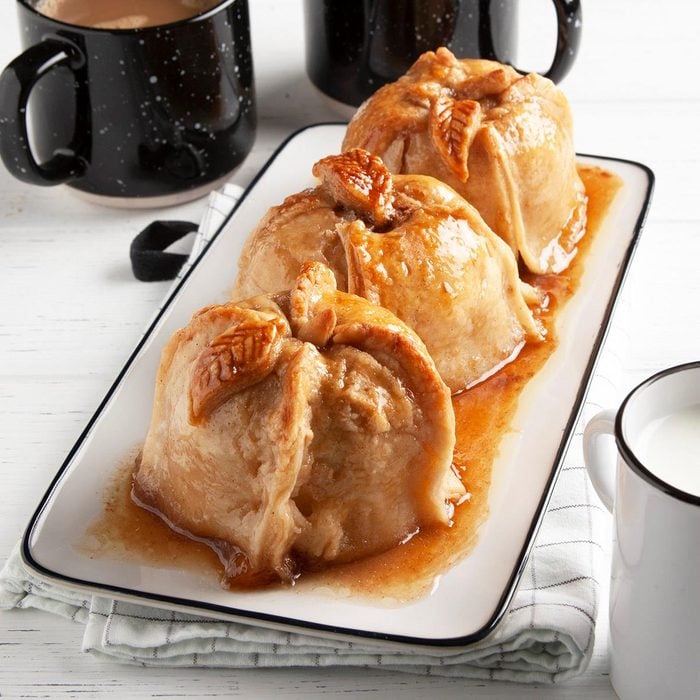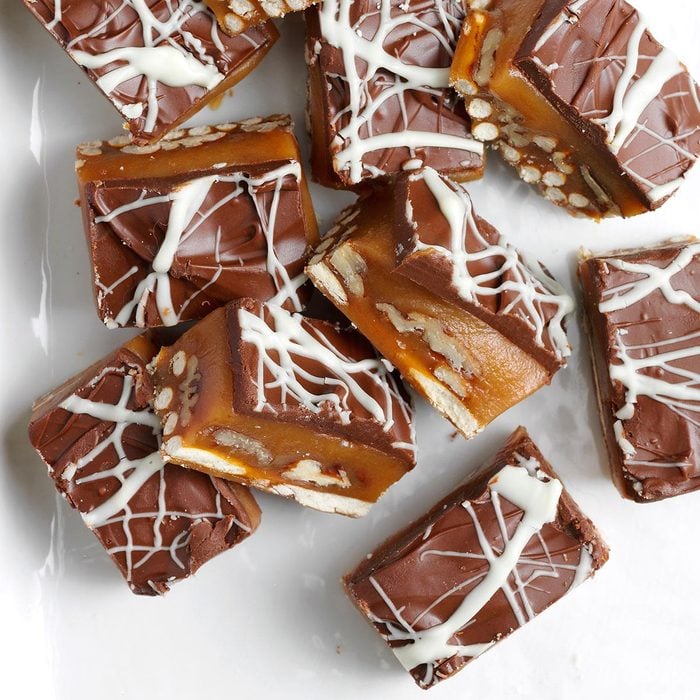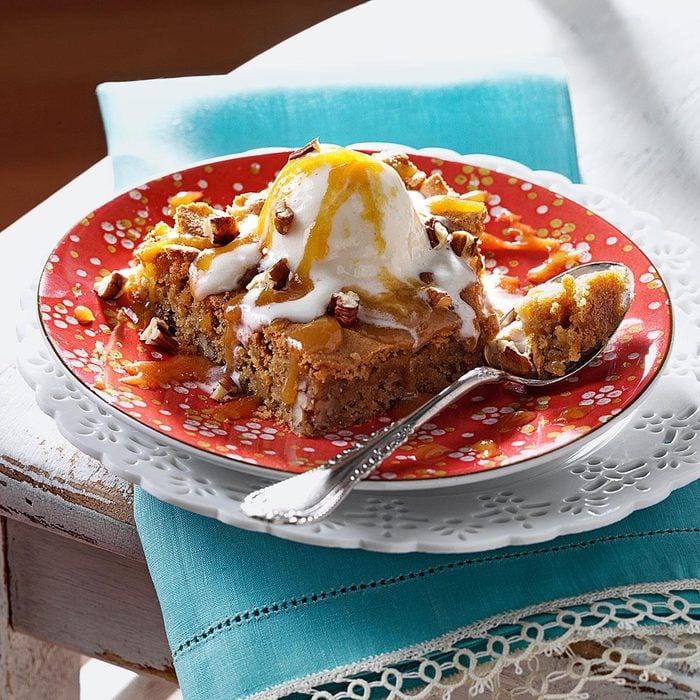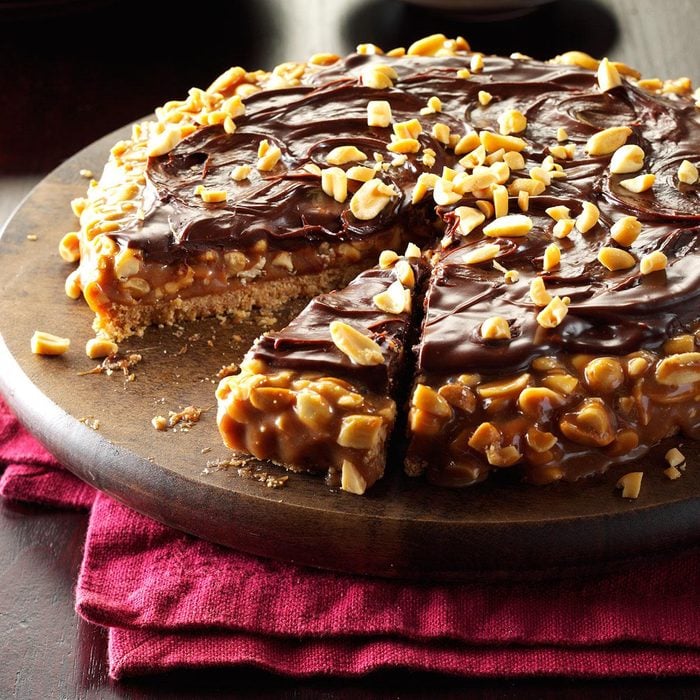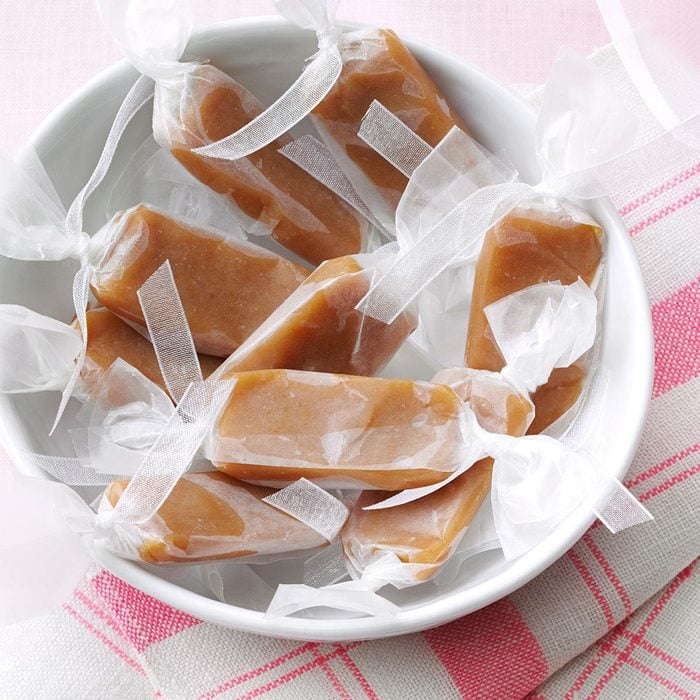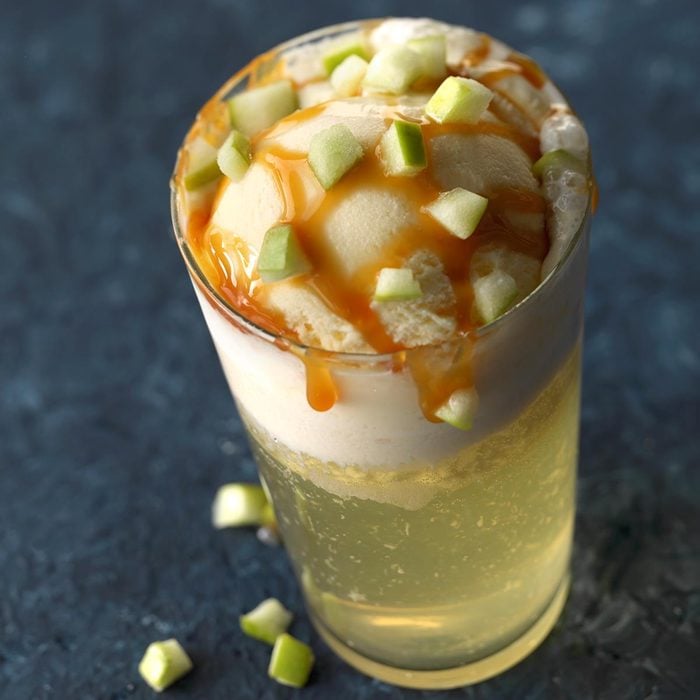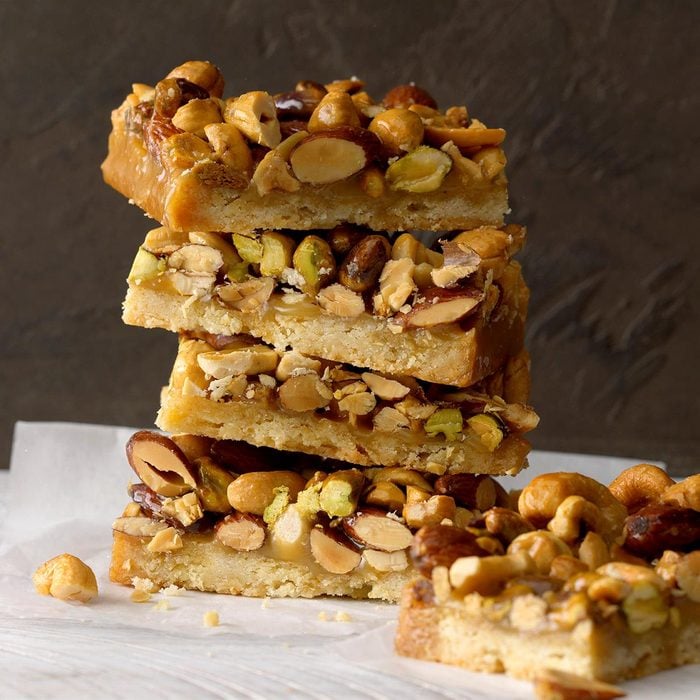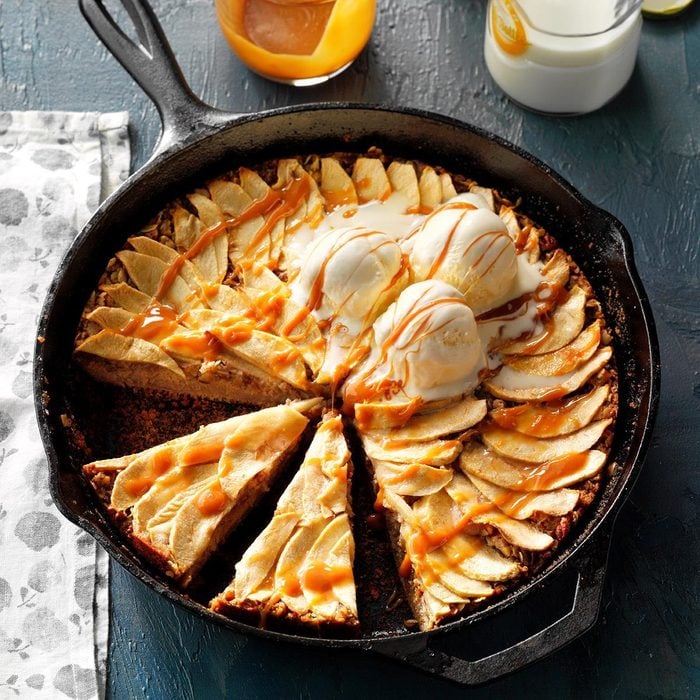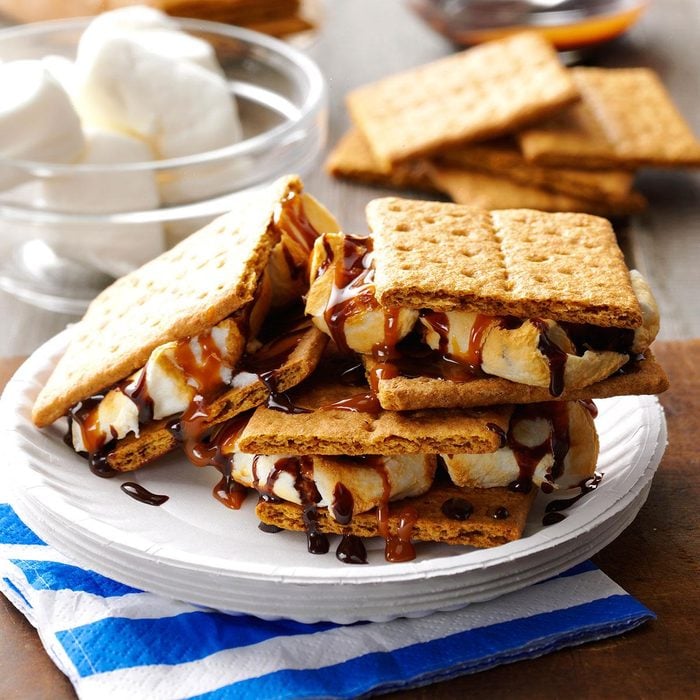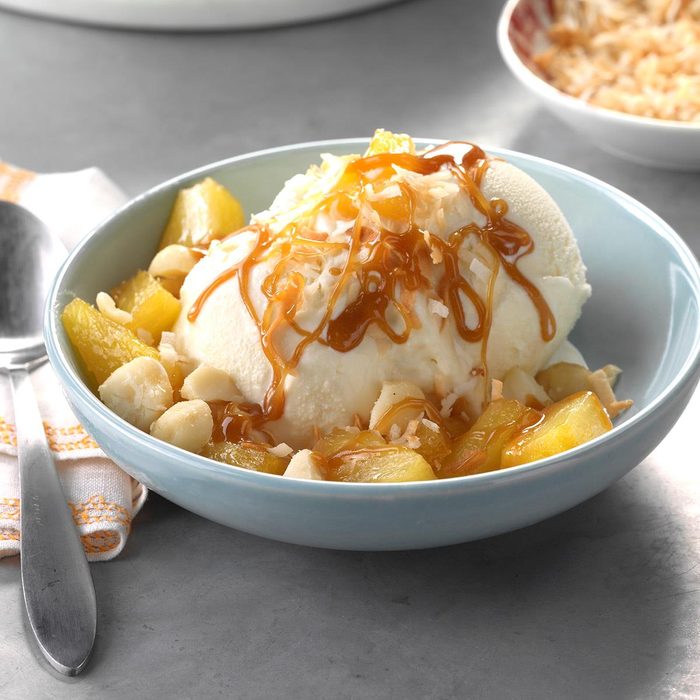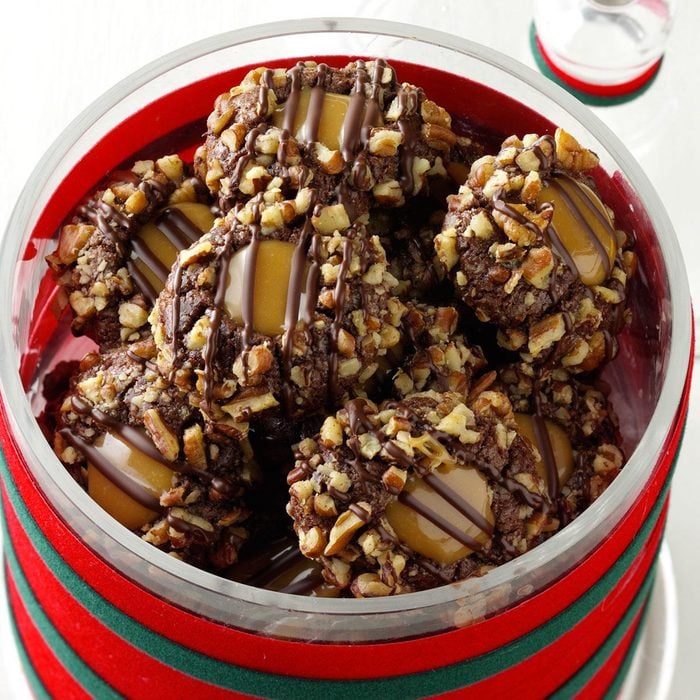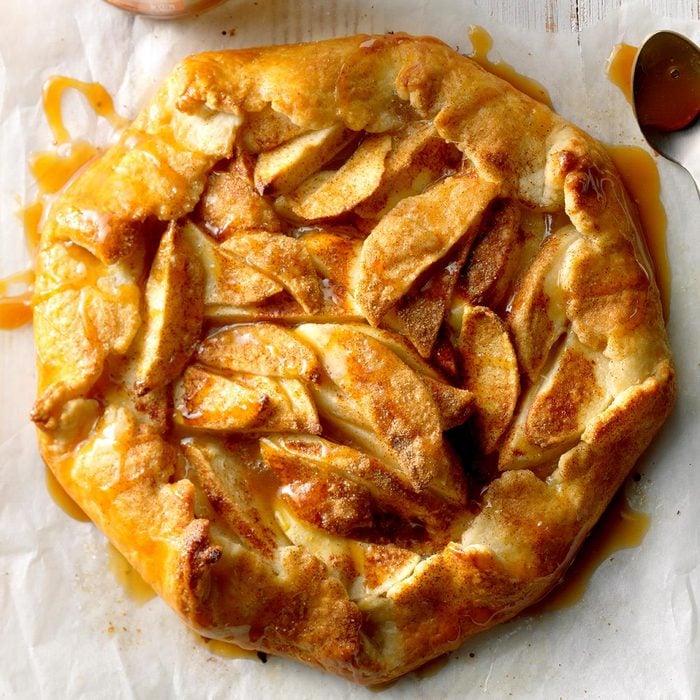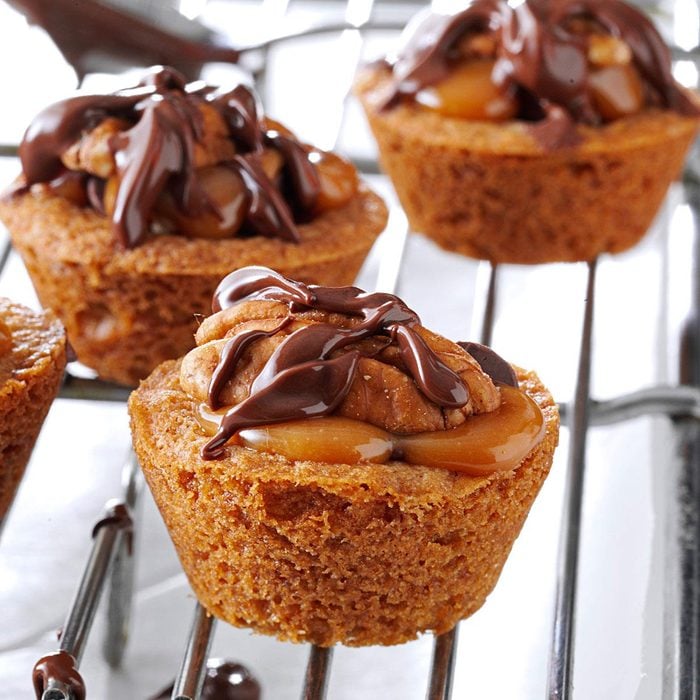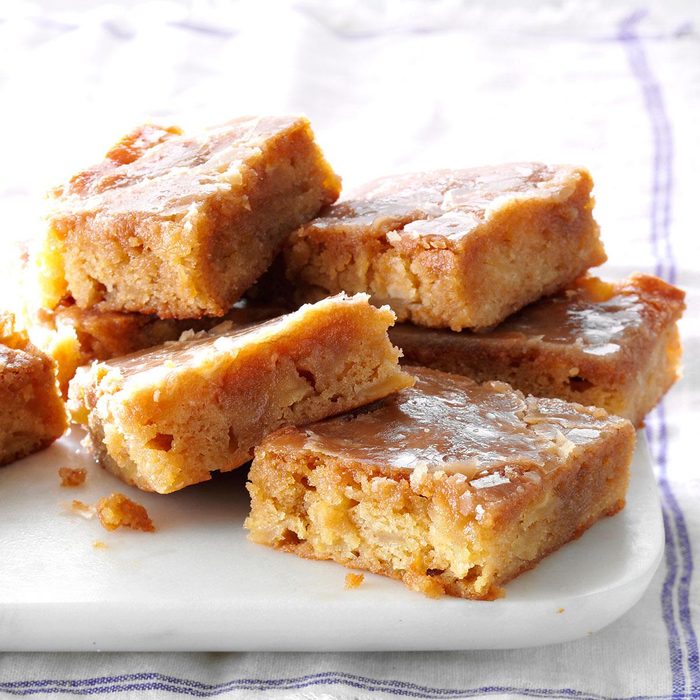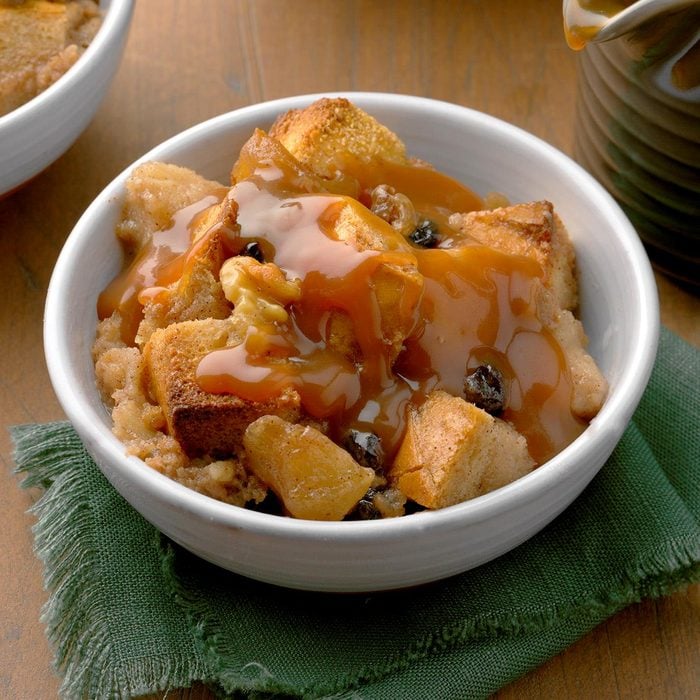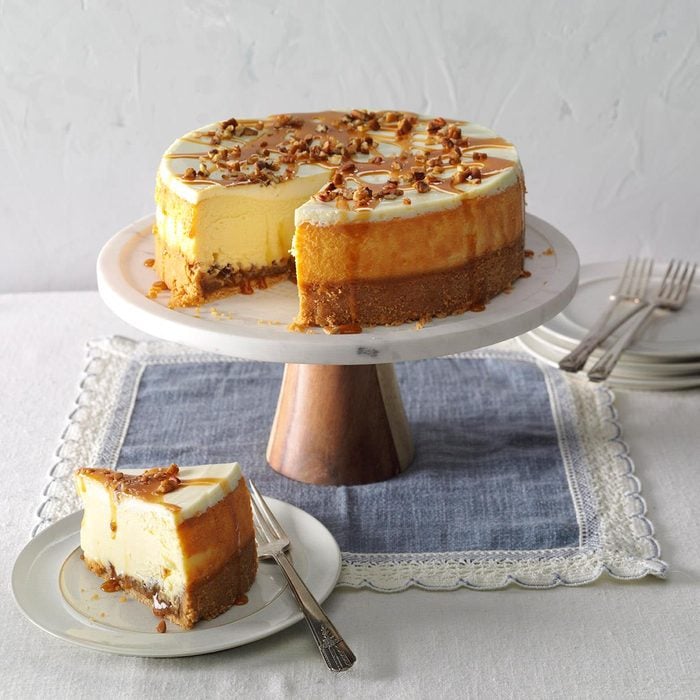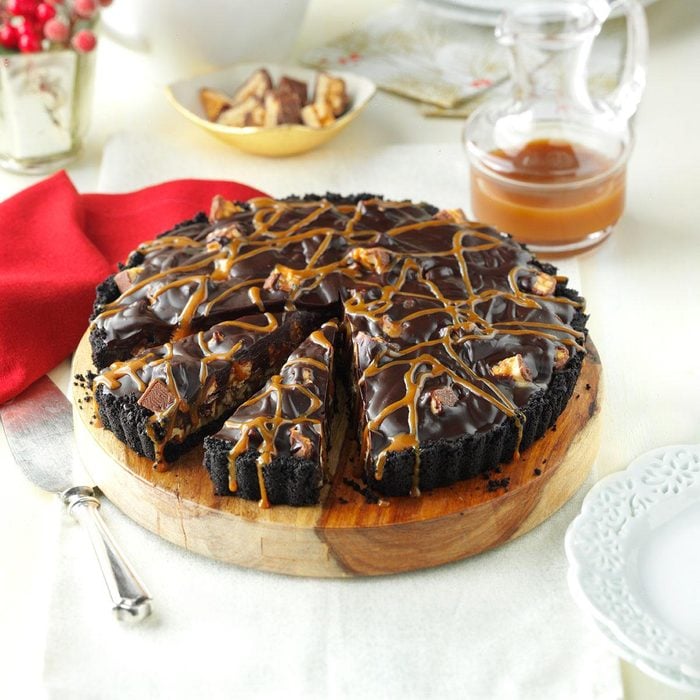ⓘ
This rich, smooth caramel sauce elevates everything from plain apples to ice cream. Just typing the word is enough to make us drool! But the process can be intimidating for many. It makes a terrible mess if the sugars burn. Even worse, you could get almost all the way through the process before you discover that the caramel is grainy. Yuck.
Luckily, both of those challenges can be overcome, and learning how to make caramel is easier than expected if you pay attention to the details.
What Ingredients Are in Caramel?
The best caramel starts with regular granulated sugar. This refined white sugar is made from sugarcane or sugar beets, and it melts more evenly than unrefined sugars. Some recipes call for brown sugar as a shortcut because its dark color looks like caramel as soon as it melts. It’s not a good choice for true caramel, though, because the molasses adds acidity to the finished sauce.
When the sugar reaches the desired color—anywhere from light amber to a very dark brown—it’s time to add something to cool it down and stop the caramelization process. You could add water, but most caramel recipes use butter or heavy cream (or both). These dairy products contain proteins that undergo a chemical reaction when they hit the hot sugar, adding an incredible amount of depth and flavor to the resulting sauce. A little salt is added to balance out the sweetness, and vanilla extract is often used to add additional flavor.
It’s pretty common to use butter in caramel, but we skip it and opt for heavy cream instead. Butter is an emulsion of milk solids, fat and water, and it can break when it hits the hot sugar. Heavy cream is much more stable, so it’s easier to work with. If you do decide to use butter, be sure to use the highest-quality butter you can find. You’ll be able to taste the difference, so splurge on the good stuff.
Finally, some caramel recipes also contain corn syrup. Sugar is made from sucrose, which can crystallize under the right conditions. Corn syrup contains glucose (which won’t crystallize), so adding corn syrup to the mix builds in a little insurance to protect against grainy caramel.
How to Prevent (and Fix) Crystallization
Fearing a grainy caramel is the number one reason most people shy away from making this delicious concoction. Grainy caramel is caused by crystallization, which is easy to avoid (and can also be fixed).
Caramel becomes grainy when the sugars crystallize, a process that happens when the melted sugar splashes up onto the cold sides of the pan. It loses its moisture and turns back into a sugar crystal. If this crystal touches the melted mass, it causes a chain reaction and the caramel will seize up and become grainy. The easiest way to prevent crystallization is to avoid stirring the caramel. Instead, swirl the pan gently to help the sugar melt evenly. If any sugars do splash up onto the sides of the pan, use a wet pastry brush to remove them.
If your caramel does seize up, simply add more water to the mixture, reheat and try again. The water will help the sugar crystals dissolve again. All you have to do is wait for the water to evaporate!
Caramel Sauce-Making Methods: Dry Caramel vs. Wet Caramel
With “dry” caramel, the sugar is heated by itself. As the sugar melts, it expands and turns into a liquid state. This technique might be preferred by purists, but we don’t recommend it for beginners. It’s easy to burn the sugar if it melts unevenly, and stirring the melting sugar can cause it to crystallize.
Instead, we recommend making a “wet” caramel, where we add water to the sugar. The water helps the sugar melt evenly, and it makes it easier to swirl the caramel around in the pan as it cooks. This method is a little more foolproof, and the water evaporates off during the cooking process, so it doesn’t affect the end result.
How to Make Caramel from Scratch
The idea of making caramel strikes fear in the hearts of even the most experienced bakers, but it doesn’t have to.
Before you get started, check out the top mistakes to avoid when making caramel. Then, measure your ingredients in advance and get ready to be surprised that the process is easier than you thought.
Ingredients
- 1/2 cup water
- 1-1/2 cups granulated white sugar
- 1 cup heavy cream
- 1/2 teaspoon kosher salt
- 1 teaspoon vanilla extract (optional)
Yield: About 1-1/2 cups
Tools You’ll Need
It’s really important to start with a heavy-bottomed saucepan with tall sides. Thin pans can cause the sugar to melt unevenly, leading to burnt sugars. The pan also needs to be large enough to protect yourself from boil-over or any hot sugar splatters. The minimum size we recommend is a 3-quart pan, although you can use a larger, more common 4-quart saucepan (like this Cuisinart stainless steel saucepan). Multi-clad stainless-steel is a good choice here as it heats evenly, and its light color allows you to view the color changes as the sugar cooks.
You’ll also want an instant-read thermometer. Expert caramel makers can tell the different cooking stages by color, but a thermometer is a more precise way to know when to add the butter and cream to the sugar. Splurge on a candy thermometer that can read temperature changes in one second, like Thermoworks’ Thermapen.
Finally, make sure you have a heat-resistant rubber spatula on hand. You could also use a whisk, but the spatula is easier to use (and clean).
Directions
Step 1: Melt the sugar
Pour the water into a 3-quart (or larger) heavy-bottomed saucepan. Add the sugar and whisk lightly with a fork to incorporate it into the water, taking care not to splash onto the sides of the pan. Heat the mixture over medium heat for about 6 to 8 minutes. The sugar will start to melt at 320°F, and it will soon caramelize. When the sugar becomes honey-colored (around 340°F), reduce the heat to low and continue cooking until the sugar is amber-colored and reaches 360°F, about another 5 minutes.
Editor’s Tip: After incorporating the sugar into the water, it’s important not to stir or the sugars can crystallize and cause the caramel to seize up. Instead, swirl the pan from time to time to ensure the sugar melts evenly.
Step 2: Add the cream
Remove the pan from the heat and quickly (but carefully) add the heavy cream, salt and vanilla extract (if using). The mixture will bubble up vigorously, so it’s not a bad idea to place a mesh strainer on top of the pot to protect your arms from spitting sugar. Remove the mesh strainer and stir the caramel until it’s smooth.
Step 3: Store the caramel
Remove the caramel from the pan, taking care not to scrape the bottom of the pot. There may be some lingering crystallized sugar down there, and you don’t want that mixing with your super smooth caramel. Instead, pour the caramel freely into a heat-resistant container, like a canning jar. (Here are more tips for how to store caramel.)
Tips for Making Caramel
Be prepared
Caramel comes together pretty quickly, so this isn’t a recipe that you can walk away from or prep as you go. Measure your ingredients in advance, and have them all at arm’s length so you’re ready to add the cream as soon as the sugar’s ready.
How to keep caramel sauce from burning
Burnt caramel sauce is bitter and unpleasant tasting. Unfortunately, there’s no way to fix it. Don’t even try—sugar is inexpensive, so just start over. The main reason caramel burns is because the sugar heats unevenly, so use a heavy-bottomed pan to give yourself a head start. Then, swirl the melting sugar as needed until you see an even color.
Does caramel harden in the fridge?
If you’re wondering why your caramel is hard, it probably has something to do with temperatures. Caramel is runny when it’s warm, but it thickens to become hard and chewy as it cools. You can heat refrigerated caramel in the microwave, stirring frequently, until it’s warm, smooth and easy to drizzle.
Why do you salt caramel?
A small amount of salt is added to caramel for balance. The sugar is extremely sweet, and the butter or heavy cream add an incredible level of richness. A little pinch of salt goes a long way to making taste caramel more balanced. It’s not enough to add a salty flavor, but that can be achieved by topping your caramel sauce with large flakes of salt for a sweet-and-salty vibe.
How to Store Caramel
The caramel will be very hot when it comes off the stove, so it’s important to use a heat-resistant container for storage, like a canning jar. Caramel should last about two weeks in the fridge or as long as three months in the freezer. It will thicken and harden as it cools, so warm it up before use in the microwave.
How to Clean Caramel from the Pan
Caramel should be relatively easy to clean from the pan. It’s a mixture of melted sugar, so any crystallized sugars that remain at the bottom of the pan can usually be removed with the addition of hot water. You can also soak the spatula or any other utensils used for caramel-making in this hot water to loosen the bits.
If you accidentally burned the caramel, it can turn into a sticky mess. Fill the pot with water and bring it to a boil on the stovetop. Use a wooden spoon or heat-resistant spatula to loosen the bits from the sides and bottom. After all the bits are removed, pour off the water and wash the pot with soapy water.
The Best Caramel Desserts on the Block
Caramel-Pecan Pumpkin Pull-ApartsWe love sticky buns made with my husband's angel biscuit dough, caramel and pecans. For a twist, try apple butter or applesauce instead of the pumpkin. —Carolyn Kumpe, El Dorado, California
Pumpkin Pie Ice Cream with Salted Caramel SauceTruthfully, I want those cozy flavors of Thanksgiving throughout the year. This ice cream has just the right balance of spices, and no matter when you make it, you'll find yourself surrounded in the warmth and love that pumpkin pie has to offer. —Angie Stewart, Memphis, Tennessee
Chewy Caramel-Coated PopcornWhen I was a kid, my mom made this recipe often. I've adapted it to make it more chewy and gooey than her crunchy, nut-loaded version. I get requests to make this for every event that I host, and have never had a single leftover! —Shannon Dobos, Calgary, Alberta
Dulce de Leche CheesecakeThis decadent dulce de leche cheesecake features rich cream cheese filling with swirls of dulce de leche atop a spiced gingersnap and walnut crust.
Turtle BrowniesChocolate, caramel and pecans —how can you go wrong with turtle brownies? This recipe is quick and easy to make and might just become one of your new favorites.
Or try this classic
turtle candy recipe!
Caramel HeavenliesBefore I cut these bars into triangles, I trim the edges so all the cookies look the same. My husband and daughter love this part because they get to eat the scraps. —Dawn Burns, Lake St. Louis, Missouri
Apple Pie a la ModeI was planning a dinner party and wanted a dessert that wowed. My caramel apple ice cream pie certainly does the trick. Now it's a family favorite. —Trisha Kruse, Eagle, Idaho
Salted Cashew & Caramel ChewsNothing says "welcome home" like warm, gooey, chewy cookies right out of the oven with a cold glass of milk—mmm, heaven. You don't need a plate. Just grab and go. —Paula Marchesi, Lenhartsville, Pennsylvania
Salted Caramel Cappuccino CheesecakeAfter spending years living in Seattle, I’ve become a coffee junkie! I had to relocate across the country for a time, so I created this cheesecake with the flavors of salted caramel, coffee and espresso. It lifted me up on days when I felt blue about leaving one of the world’s amazing coffee destinations. —Julie Merriman, Seattle, Washington
Caramel Nut BarsNo one can resist these chewy caramel and chocolate bars with a delightful oat crust and topping. They make a tempting dessert or a special snack anytime. These rich bars are perfect for a potluck since a little goes a long way.
—Pat Hills, South Dayton, New York
Contest-Winning Caramel Apple CrispWhen my kids and I make apple crisp, we use all sorts of apples to boost the flavor and texture. Add
melted caramels, and you’ve got something scrumptious. —Michelle Brooks, Clarkston, Michigan
Turtle Tart with Caramel SauceBetween the creamy chocolate filling, crunchy nut crust and gooey caramel sauce, this tart has a whole lot to love. Plus, you can make it two to three days in advance. One of my daughters even asks for this instead of cake on her birthday. —Leah Davis, Morrow, Ohio
Salted Peanut RollsA Christmas gift of homemade candy is always a hit with sweet tooths. I dip these peanut rolls in chocolate, but they're yummy plain, too. —Elizabeth Hokanson, Arborg, Manitoba
Caramel Apple CheesecakeThis caramel apple cheesecake will bring back nostalgic memories of your childhood visits to the fair. This version is all grown up, with a rich cheesecake filling and its garnish of pecans.
Caramel Pecan ShortbreadMy grandchildren look for Grandma's "candy bar cookies" every Christmas. I recommend doubling the recipe for these sweet treats because they go so fast. —Dorothy Buiter, Worth, Illinois
Simple Turtle CheesecakeFor an almost instant dessert, I spread homemade ganache and caramel sauce over premade cheesecake. It always makes busy holidays feel slightly less hectic. —Laura McDowell, Lake Villa, Illinois
Apple Dumplings with SauceThis warm and comforting apple dumplings recipe is incredible by itself or served with ice cream. You can decorate each dumpling by cutting 1-inch leaves and a 1/2-inch stem from the leftover dough. —Robin Lendon, Cincinnati, Ohio
Caramel Pretzel BitesI created this recipe wanting to make my own version of a popular candy store pretzel log dipped in caramel, chocolate and nuts. These bites are smothered with homemade caramel. —Michilene Klaver, Grand Rapids, Michigan
Caramel Chocolate TrifleA highlight of our annual family reunion is the dessert competition. The judges take their jobs very seriously! Last year's first-place winner was this tempting trifle.—Barb Hausey, Independence, Missouri
Blond Brownies a la ModeEver since I tried the maple blondie at Applebee's, I've been determined to figure out the recipe. I tried several variations until I came up with this one, and it's become one of our family favorites. —Pat Parker, Chester, South Carolina
Caramel Peanut FantasyPacked with peanuts and gooey with caramel, this do-ahead treat is one sweet dream of a dessert to serve company. With an easy cookie crust and scrumptious candy bar layers, it goes together quickly—and will disappear just as fast! —Taste of Home Test Kitchen, Milwaukee, Wisconsin
Caramel Pear PuddingDon't expect this old-fashioned dessert to last long. The delicate pears and irresistible caramel topping make it a winner whenever I serve it. It's nice to have a tempting fall cake that puts the season's best pears to excellent use.
—Sharon Mensing, Greenfield, Iowa
Soft Chewy CaramelsOne of my first experiences with cooking was helping my mother make these caramels. We'd make up to 12 batches each year. Today, I do at least 95 percent of the cooking at home, but my wife does much of the baking. —Robert Sprenkle, Hurst, Texas
Caramel Apple FloatWho doesn't love the flavors of caramel, apples, and vanilla ice cream together? If I'm feeling fancy, I drizzle caramel syrup around the inside of my glass before adding the apple cider and ginger ale. —Cindy Reams, Philipsburg, Pennsylvania
Rustic Nut BarsMy friends love crunching into the crust—so much like shortbread—and the wildly nutty topping of these chewy, gooey bars. —Barbara Driscoll, West Allis, Wisconsin
Caramel-Apple Skillet BuckleMy grandma used to bake a version of this for me when I was a little girl. She would make it using fresh apples from her tree in the backyard. I've adapted her recipe because I love the combination of apples, pecans and caramel. —Emily Hobbs, Springfield, Missouri
Cookout Caramel S'moresEasy delectable treats make a playful finish to an informal meal. Toasting the marshmallows extends our after-dinner time together, giving us something fun to do as a family. —Martha Haseman, Hinckley, Illinois
Apple Dumpling Roll-UpsA family friend gave me a simple way to make apple dumplings without lots of steps. I love the sticky cinnamon topping. —Jenny Leighty, West Salem, Ohio
Caramel Whiskey CookiesYogurt replaces part of the butter in this traditional cookie, but you would never know. I get a lot of requests for these and can’t make a cookie tray without them. —Priscilla Yee, Concord, California
Tres Leches CakeExperience the ultimate in creamy, dreamy desserts with this easy-to-make tres leches cake, soaked in a trio of milks and finished with a cloud of whipped cream.
Turtle CheesecakeWith rich layers of chocolate and caramel cheesecake, crunchy pecans and a silky chocolate ganache topping, this turtle cheesecake is a showstopping dessert that's a labor of love. But they'll love you for it!
Gooey Caramel-Topped GingersnapsMaking these cookies is therapeutic for me. And they are always quite popular at fundraisers. If you’d like, you can make variations by using different nuts.
—Deirdre Cox, Kansas City, Missouri
Caramelized Pineapple SundaesWhenever we get a craving for a tropical escape, this super simple recipe whisks us away in no time. Vanilla's nice but drizzling the sauce over salted caramel ice cream and taking a bite is just pure paradise. —Elisabeth Larsen, Pleasant Grove, Utah
Chocolate Caramel ThumbprintsCovered in chopped nuts and drizzled with chocolate, these cookies are delicious and pretty. Everybody looks forward to munching on them during the holidays. —Elizabeth Marino, San Juan Capistrano, California
Rustic Caramel Apple TartLike an apple pie without the pan, this scrumptious tart has a crispy crust that cuts nicely and a yummy caramel topping. —Betty Fulks, Onia, Arkansas
Turtle Cookie CupsFor a twist, use white chocolate chips in the cups and drizzle with white chocolate. — Heather King, Frostburg, Maryland
Gingerbread CheesecakeThis is my twist on Christmas gingerbread...cheesecake-style! I like to garnish it with small gingerbread men all the way around the sides and a dollop of whipping cream on each slice. —Cindy Romberg, Mississauga, Ontario
Glazed Apple-Maple BlondiesMy 6-year-old son and I conjured up this recipe to use the last of the apples we picked from the local apple orchard. Each bar goes beautifully with a dollop of sweetened whipped cream. —Heather Bates, Athens, Maine
Apple Bread Pudding with Caramel SauceThis apple bread pudding with caramel sauce has been in my life for a long time. It's a family fave and always on my buffet when I put together a brunch. It's also special enough for dinner dessert. —Cleo Gonske, Redding, California
Caramel Apple BarsThese bars make an excellent fall dessert. We like to warm individual servings in the microwave and serve with a scoop of vanilla ice cream. It quickly became a family favorite; maybe it'll become one of your family's, too. —Carol Stuber, Osawatomie, Kansas
Caramel Pecan CheesecakeI created this creamy cheesecake using two of my favorites—caramel and pecans. It is a stunning cake and rivals any I've tasted. —Deidre Sizer, Cedarville, Ohio
Fudgy Turtle PieTurtle pie is a truly decadent dessert recipe everyone needs. We love to mix chocolate, caramel and crunchy candy bits in a pie that’s ooey-gooey fabulous. —Dolores Vaccaro, Pueblo, Colorado





















